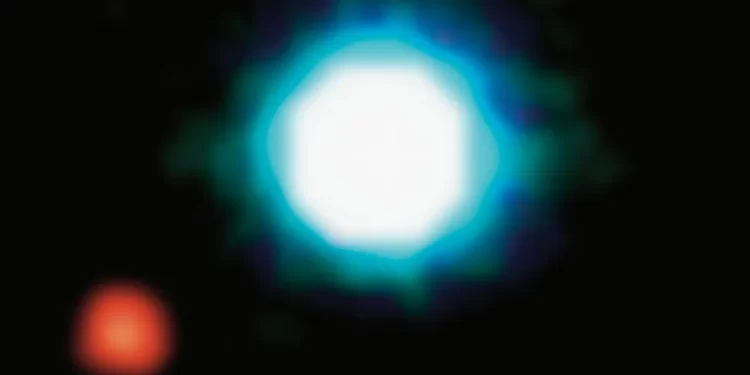Twenty years ago this week, a groundbreaking moment in astronomy unfolded as scientists captured the first direct image of a planet beyond our solar system. Using the Very Large Telescope in northern Chile, astronomers imaged an enormous super-Jupiter exoplanet called 2M1207b, located a staggering 170 light-years away in the constellation Centaurus.
This discovery wasn’t just another leap forward in space exploration—it was the first visual confirmation of an exoplanet, proving for the first time that planets exist around stars beyond our own solar system.
What Is 2M1207b?
2M1207b is a planet unlike anything we’ve seen in our cosmic neighborhood. This gas giant is about five times more massive than Jupiter and orbits a brown dwarf star known as 2M1207, which sits on the boundary between a star and a planet. Brown dwarfs like this one have masses too small to sustain nuclear fusion like true stars, but they are far more massive than planets.
The distance between 2M1207b and its brown dwarf star is nearly twice as far as Neptune’s distance from the Sun, creating a celestial system that is completely different from anything in our solar system.
Before this discovery, the existence of planets around other stars was purely theoretical. But the image of 2M1207b, released on September 10, 2004, gave the world its first visual proof of an exoplanet, ushering in a new era of exoplanet exploration.
Gaël Chauvin, the astronomer who led the study, said at the time, “Given the rather unusual properties of the 2M1207 system, the giant planet most probably did not form like the planets in our solar system.” Instead, Chauvin suggested that 2M1207b formed through a gravitational collapse of gas and dust, much like how stars form, rather than through the slow process of accretion seen in our solar system.
A Closer Look with Infrared Eyes
The image of 2M1207b was created using infrared data, a technique crucial for exoplanet discovery. Since planets are typically far dimmer than the stars they orbit, the use of near-infrared exposures helped reduce the brightness contrast, allowing the exoplanet to stand out. Captured by the 27-foot Yepun telescope at the Paranal Observatory in Chile, the image was composed of three different wavebands, providing the clarity needed to separate the planet from the bright brown dwarf.
Although 2M1207b was the first exoplanet to be imaged, it was certainly not the last. Over the last two decades, astronomers have used direct imaging and other advanced techniques to discover more than 200 planets this way. Today, scientists have confirmed the existence of more than 5,600 alien worlds orbiting distant stars, each one expanding our understanding of the universe.
The image of 2M1207b marked a historic milestone, but it was just the beginning. As we continue to push the limits of astronomical observation, who knows what other distant worlds await discovery?











